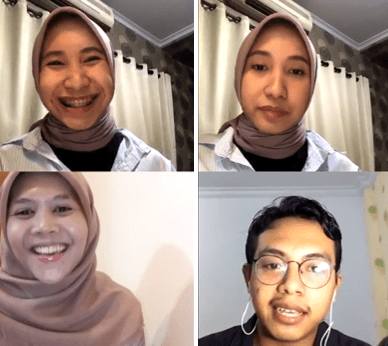
The LPDP scholarship varies. There is the regular scholarship, scholarship for children who went to religious schools, athletes, dissertations, doctors, and many more. Sekar explained that the LPDP policy now and in 2016 is slightly different in terms of the application to the selection process. Before, we were able to choose one university of our choice, but now that choice is narrowed down to three choices in the list. The selection process also used to not be done through the computer.
Based on Sekar’s experience, the difference between the University of Birmingham and Gadjah Mada University is apparent in it’s academic area. In the University of Birmingham, reading a literature is mandatory before we go to class, unlike many universities in Indonesia where we are free to read or not to read. “The difference that is most apparent is in the academic area.
In Birmingham, I was asked to think critically, read a lot of journals and literature. I was also asked to read before I go to class,” Sekar said. Sekar chose the LPDP scholarship not because of a particular reason but merely because she wants to take a shot. “I do want to pursue Masters and I have tried other scholarship. Turns out I was accepted by LPDP,” Sekar explained.
In this first session, Sekar explained the need to have a plan for after we graduate university. While we are in university, we need to have plenty experience in organizations, joining seminars, as well as interning in companies. These experiences are important to be able to competewhen applying to jobs or scholarships. “The bottom line is in university we need to start planning. Think about what we want to do after college so we know what to prepare.” Sekar said.
As the competition in the working world gets tighter, more graduates are unemployed. Some of them can’t even pass the administrative selection step, mainly because of their curriculum vitae (CV). In the second session, Dimas Wahyudi explained how to create a good CV. According to him, CV is actually a small part of the recruitment process. It’s simply a gateway to enter the rest of the selection process. “It doesn’t matter whether you are accepted or not, but don’t lose in the first few steps just because of your CV or your substance,” he said.
In creating a CV, we need to answer the question of how we can contribute to the organization or company that we are applying to. Dimas explained that there are several things that we need to include in our CV to make it shine. First, our personal identity which includes our full name, phone number, and email address. Second, a summary of who we are which includes one paragraph about who we are, our achievements, and our experience. Third, a professional experience section which elaborates our experience in an organization or institution. The third section needs to include our title, job description, as well as our accomplishments.
Moreover, we need to stack these experience from the most to the least recent. Fourth, an education history section which also includes our GPA. Fifth, our skills and certificate that is related to the position we are applying for. Six, the portofolio that includes a summary of our work. In this section, we can include the link to our work. Other than the sections already mentioned, we can also include contents like our aspiration, hobbies, reference, and our social media account.
